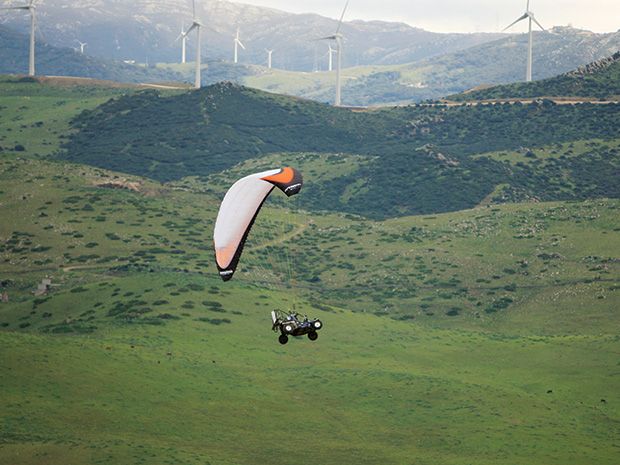You Tell Us 2010
It’s usually not hard to spot technology’s clear-cut winners and outright dogs. But every year IEEE Spectrum’s editors cross rhetorical swords over a few candidate projects. In the name of peace, we thought we’d let you decide
No matter where you travel, the locals seem to drive like a bunch of maniacs. But now a company named Parajet, in Mere, England, wants to let you rise above the gridlock caused by the talkers, texters, eaters, shavers, and makeup artists who drive with a foot on the accelerator and eyes on everything but the road. Later this year, the company will introduce the SkyCar, a dune buggy–style car that turns into a paraglider on…well, the fly.
The two-seater takes to the air by deploying an asymmetrical parasail “wing” and then accelerating to at least 60 kilometers an hour. Its 104-kilowatt (140 horsepower) Kawasaki motorcycle engine lets it glide at its normal cruising altitude of 900 meters at speeds up to 161 km/h (100 miles per hour), the company claims. A tankful of biodiesel is enough for a 300-km flight. The car’s also good for thrills on the ground—it goes from zero to 100 km/h in 4.2 seconds and can tackle dunes and rocky hills as well as any off-roader.
Parajet emphasizes that so long as you fly no more than 1220 meters (less than a mile) above the ground, you’ll need no credentials beyond a driver’s license. All you have to be able to do is steer a huge heap of metal by pulling on two cords.
Though the SkyCar sounds like a lot of fun, it remains to be seen how many people will spend US $80 000 just so they can skip traffic jams and get the chance to execute a rather difficult dismount in their company’s parking lot. (Check out another flying car idea Spectrum looked at a few years ago. The Dutch company behind it says it will make the street-legal aircraft available for sale in 2011.) We’re inviting you to vote on whether the SkyCar will be a success or a failure. Below are five other technology projects for you to consider. They include an electric vehicle project that uses battery-swapping stations to solve the nagging range problem, paper-thin batteries that might be used in smart credit cards, and a hands-free gaming controller that’s Microsoft’s answer to Nintendo’s Wii.
You Tell Us: Electric Vehicles Go Plug-and-Play
Willie Jones is an associate editor at IEEE Spectrum. In addition to editing and planning daily coverage, he manages several of Spectrum's newsletters and contributes regularly to the monthly Big Picture section that appears in the print edition.
